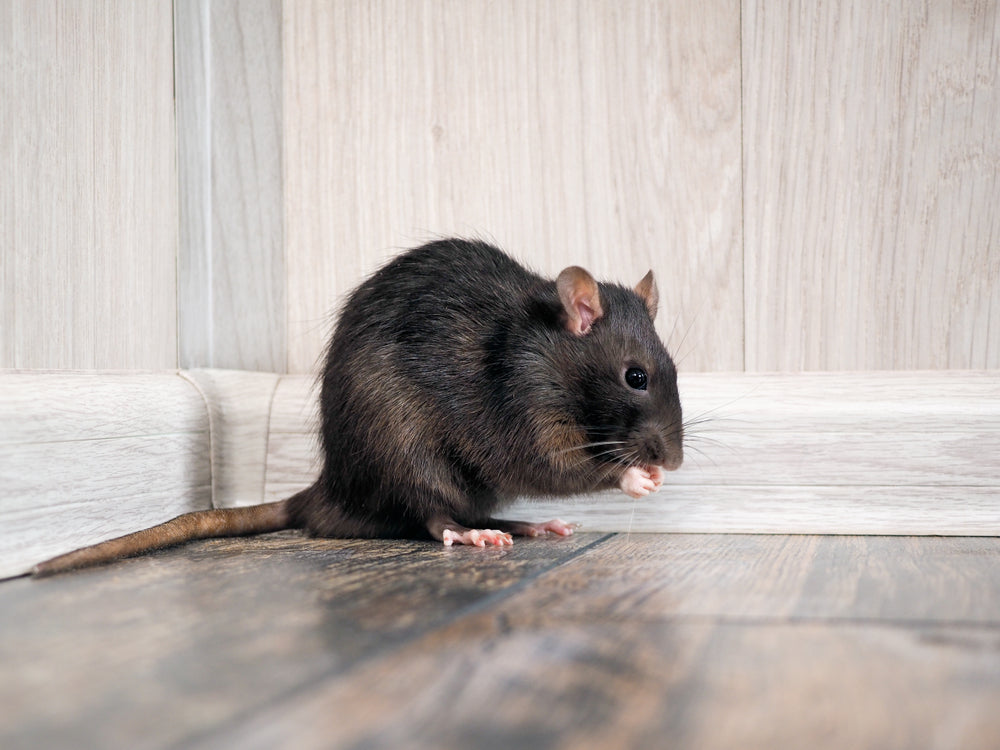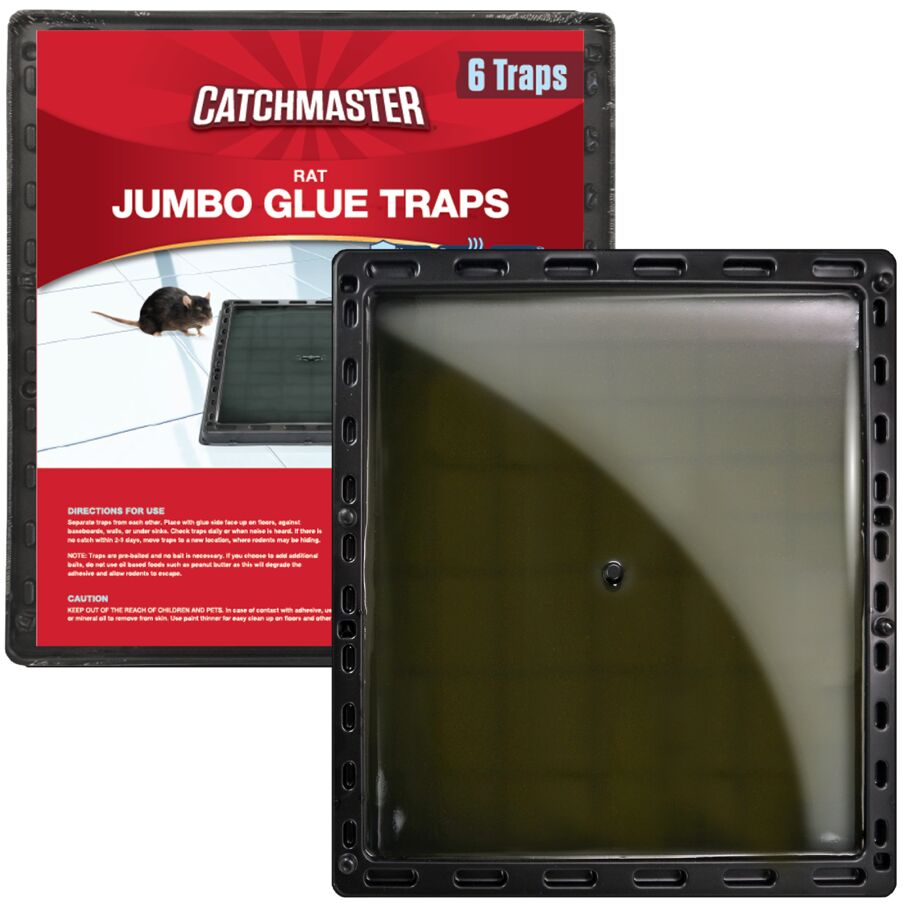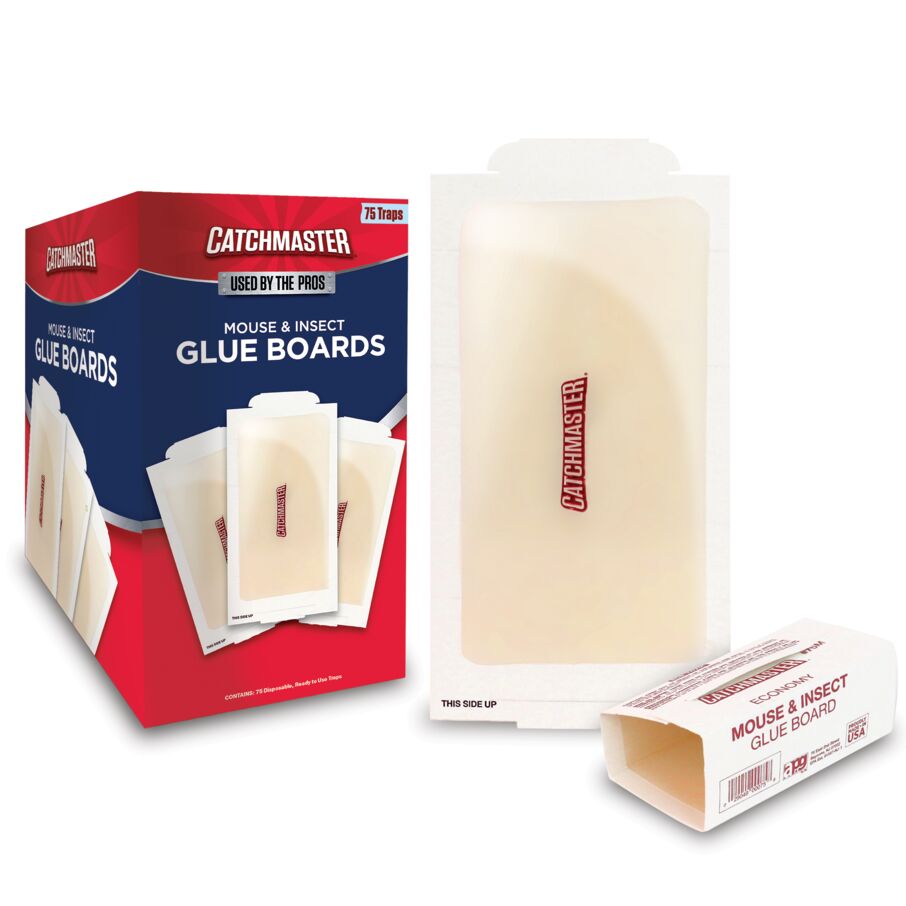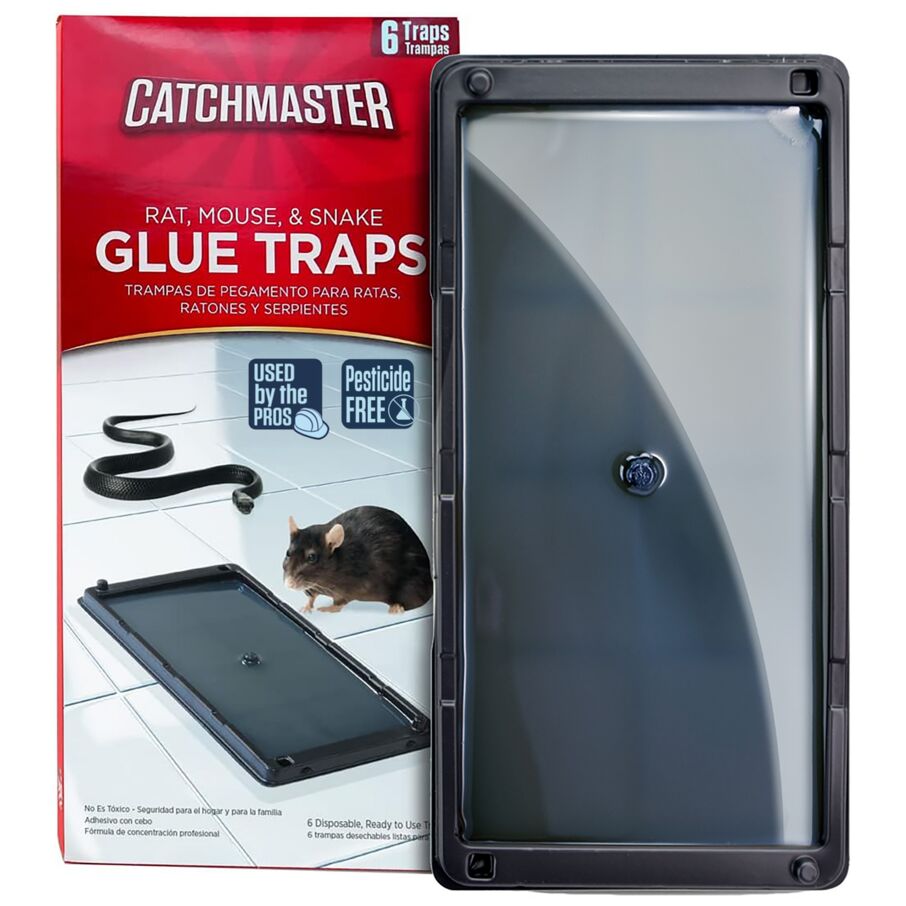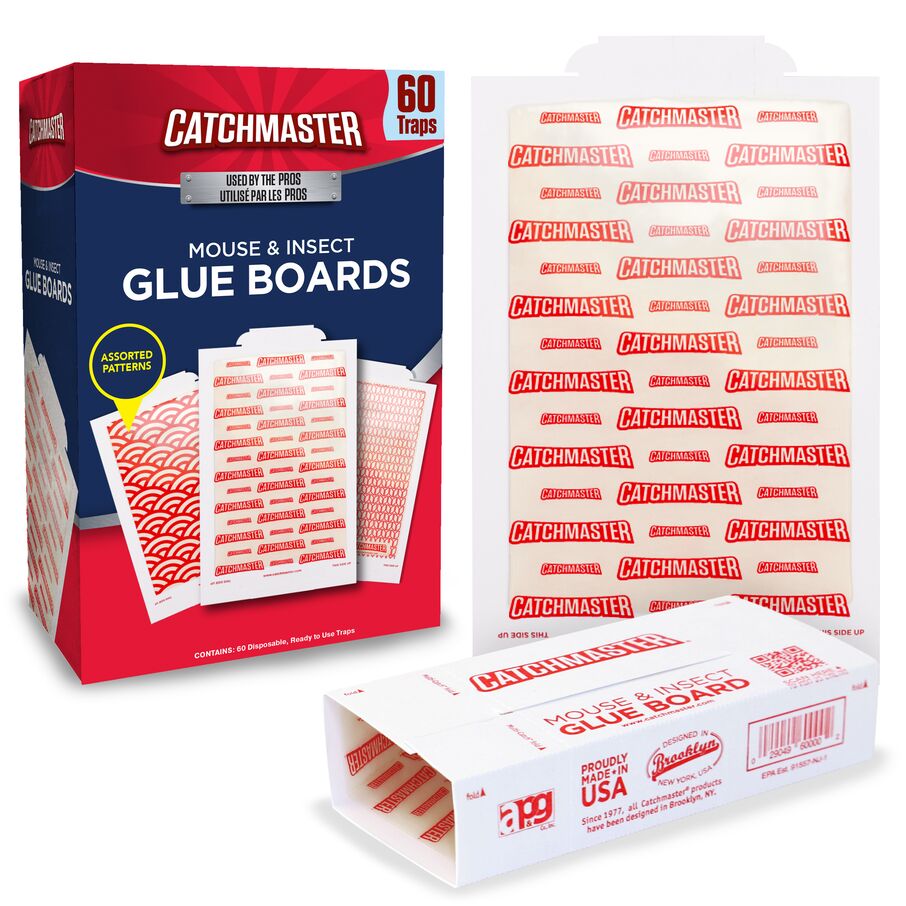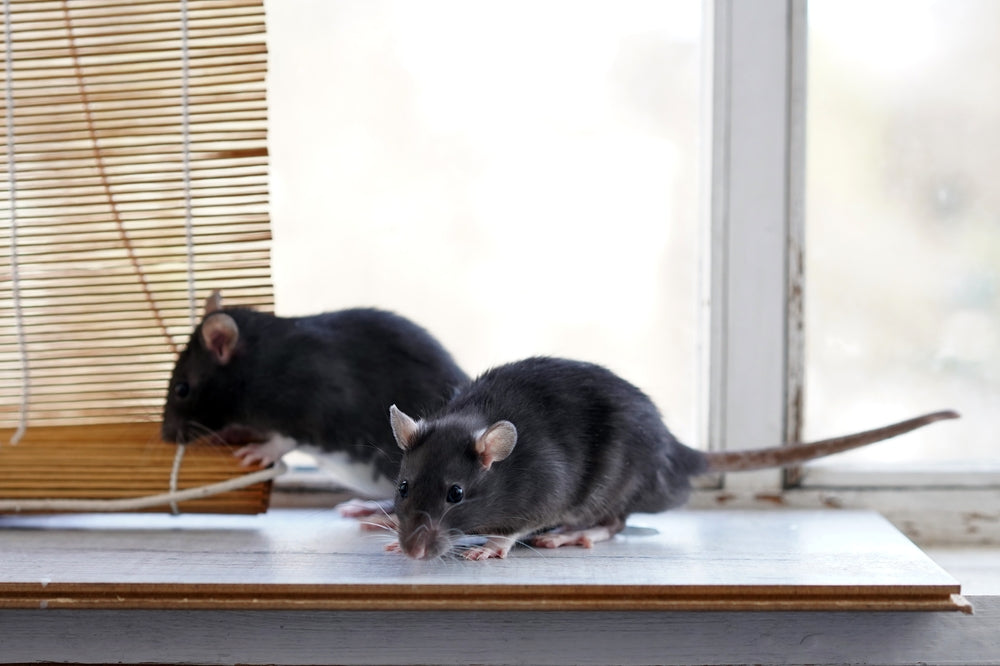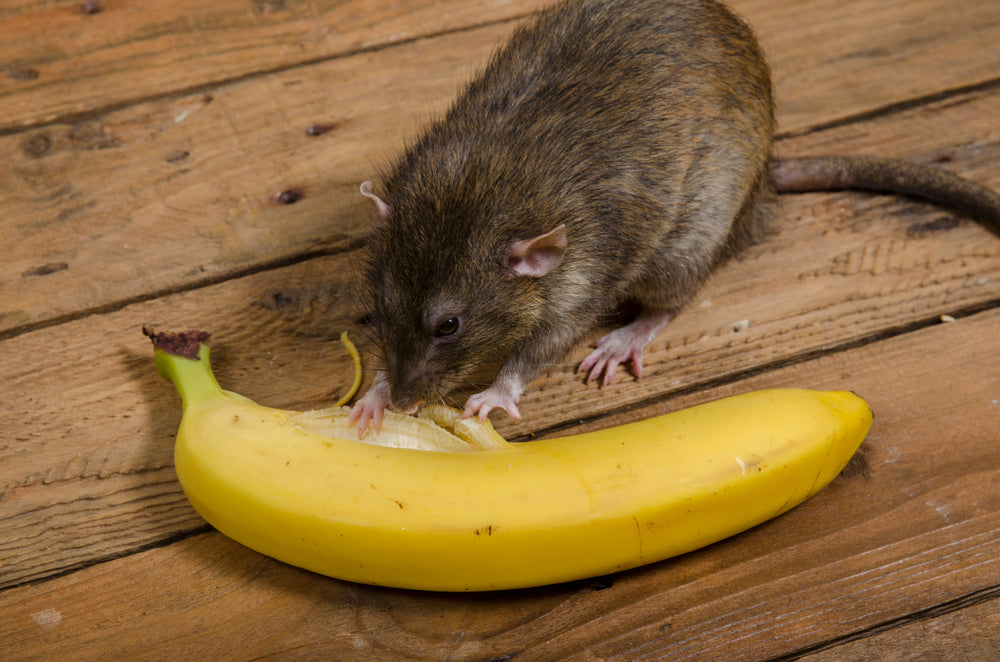Finding out you have a rat problem can be one of the most distressing experiences for a homeowner. These unwelcome visitors aren’t just a nuisance; they’re also a health hazard, capable of causing damage to your home and making your family sick.
So, how do you catch a rat in your house? Fortunately, with the right approach, you can quickly manage and eliminate rats from your living space.
Essential Takeaways:
- Know Your Enemy for Effective Rat Control: Did you know that rats can squeeze through holes as small as a quarter? Understanding rat behavior and habits is the first step to getting them out of your home. By learning about their nocturnal nature, preferred pathways, and favorite foods, you can modify your pest control efforts for success.
- Opt for Safe Rat Removal Methods: Choose smart, effective, and humane control methods to address rat infestations. Combining Catchmaster®’s top-quality rat traps with proper food storage and sealing entry points can significantly reduce rat populations without resorting to harmful poisons. Remember, prevention and early detection are key to maintaining a rat-free home.
This guide will walk you through the process of how to catch a rat easily and safely, ensuring your home remains safe and pest-free.
Step 1: Confirm It’s a Rat Problem
Are you hearing scratching in your walls or seeing signs of a rodent infestation? Before you can learn how to catch a rat, you have to confirm that what you’re experiencing is indeed a rat and not a mouse.
Recognizing the Signs of a Rat Infestation
One of the most common signs of an infestation is hearing scratching or other noises. Since rats are nocturnal, you’re most likely to hear these noises at night when it’s quiet. They also tend to follow walls and edges as they move, which is why you’ll hear them inside your walls.
Other common signs of an infestation include noticing droppings or gnaw marks, finding nests, footprints, or tail marks, or hearing scratching noises.
Step 2: Locate Rate Entry Points and Travel Paths
A big part of learn how to catch a rat in the house is understanding how they got there in the first place. Common entry points include gaps around doors and windows, holes in walls, and openings around utility lines.
Once you locate their entry points, take these steps to ensure more rats don’t join your unwanted friends:
-
Seal Entry Points: Use materials like steel wool, caulk, or metal mesh to block gaps and holes.
-
Remove Food Sources: Store food in airtight containers and clean up crumbs and spills immediately.
-
Declutter: Clear away piles of newspapers, cardboard, and other materials that rats can use to build their nests.
Creating a less friendly environment will not only increase the chances of catching the rats but also help prevent future infestations. This is especially important during rodent season, when the weather turns colder and rats seek food, shelter, and warmth.
Step 3: Choose the Right Capture Method for Your Situation
A big part of understanding how to catch a rat with a trap is knowing which type of trap to use in your specific situation. At Catchmaster, we offer a range of professional-grade solutions designed to help you master your rat problem.
Each method has its unique advantages, and combining them can create an even better defense against rat infestations.
How to Use Rat Snap Traps: The Classic Solution
When you think of rat traps, you probably think of classic snap traps (like Catchmaster’s Jumbo Rat Snap Traps). These traps are suitable for use in smaller infestation situations, particularly when they can be placed along walls and in dark corners where rats tend to travel. Bait the traps with foods that rats find irresistible, such as peanut butter or bacon.
-
Proper Placement: Position snap traps perpendicular to the wall with the bait end against the wall. Place traps in dark corners and along walls where rats frequently travel.
-
Recommended Baits: Peanut butter, bacon, cheese, dried fruit, and chocolate are all highly attractive foods for rats. Ensure the bait is securely attached to prevent rats from stealing it without triggering the trap.
How to Use Rat Glue Traps: Versatile and Efficient
Traps like our Baited Rat, Mouse & Snake Glue Traps offer a versatile solution for a variety of pests and are designed to catch multiple rats at a time, making this rat trap an ideal choice for areas with high rat activity or in areas such as kitchens, basements, or outbuildings, including garages, sheds, or barns. To set them up:
- Place traps along walls and in corners, but keep the cover on for a few days to allow rats to become accustomed to their presence.
- After 3-5 days, remove the cover to activate the trap.
- Traps come pre-baited, so there’s no need for additional bait.
For bigger rat infestations, consider trying Catchmaster’s Jumbo Glue Trays for larger pests. They’re our largest trap ever with 81 square inches of pure stopping power, and they’re field tested under the harshest conditions to ensure maximum effectiveness.
These heavy-duty traps are perfect for areas with high rat activity, capable of catching multiple rats at once. Their size and strength make them ideal for both residential and commercial settings where rodent problems are more severe.
Becoming a True Catchmaster
By using Catchmaster’s best rat traps, you’re setting up a powerful defense against rats and other pests. With our snap traps and glue rat traps, you’re not just solving a pest problem—you’re taking a proactive step toward becoming the master of your domain.
Get ready to reclaim your space and enjoy the peace of mind that comes with a pest-free home. Remember, persistence and strategic placement are key to successful rat control. With Catchmaster by your side, you’re well-equipped to tackle even the most challenging rat infestations.
Step 4: Prepare the Area for Trapping
Once you know what you’re dealing with and how to catch a rat with a trap, it’s time to prepare the area for trapping.
Remove Competing Food Sources
Whether you use a baited snap trap or a pre-scented glue trap, remove any scents or food sources that may confuse the rats and encourage them to avoid the traps. Store food (including pet food) in airtight containers, and clean up any crumbs or spills immediately.
Minimize Human and Pet Interference
While all of Catchmaster’s traps are non-toxic and safe to use around pets and children, you should work to minimize any interference. Not only will the scent of humans and pets distract from the scent of the trap, but any interaction with the trap could compromise the adhesive or set off the snap trap.
Step 5: Place Traps Strategically for Maximum Success
Knowing where to place your traps is crucial for understanding how to catch a rat in your house. Rats are creatures of habit, and understanding their behavior can help you outsmart them. Here are some tips to help trap your rats:
Follow the Walls
Rats prefer to travel along walls and in dark, hidden areas. Place your Catchmaster traps in the following areas of best results:
- Along baseboards
- Behind appliances
- In corners and under cabinets
- Near entry points.
By strategically placing your rat traps in these high-traffic areas, you’re maximizing your chances of catching rats. Remember, rats are creatures of habit and tend to follow the same paths over and over.
This predictable behavior is their weakness, and by exploiting that weakness with well-placed traps, you’re sure to find success.
Create a “Trap Line”
To maximize your chances of success, create a “trap line”:
- Place multiple traps in a row along known rat pathways.
- Space traps about 15-20 feet apart.
- Use a combination of snap traps and glue traps for comprehensive coverage.
Remember, patience is key. It may take a few days for rats to become accustomed to their traps, but with persistence, you’ll soon be on your way to a rat-free home.
Step 6: Monitor and Check Traps Frequently
Monitoring your trap frequently will ensure it’s set up for success and effectiveness. If you notice that the bait or adhesive is compromised, replace it immediately.
Once you catch a rat, you’ll want to dispose of it quickly and safely. If necessary, replace the used trap with a new one to continue maximizing your catch and eliminate the infestation.
Step 7: Dispose of Rats Safely and Sanitize the Area
A huge part of learning how to catch a rat in a trap is knowing what to do once you’re successful. While our products are designed to be safe rat traps, it’s still important to handle any pest control situation with caution. Your safety is our top priority as you work to control rats in your own home.
Handling Traps and Rats
Follow these essential guidelines to protect yourself while effectively managing your pest problem:
- Always wear gloves when setting, checking, or disposing of traps.
- Avoid direct contact with rats or their droppings, as they can carry diseases.
- Use a plastic bag to dispose of caught rats, sealing it tightly before placing it in the outdoor trash.
Be sure to keep both snap traps and glue traps away from children and pets. Snap traps can deploy at the slightest touch, and any trap that has come into contact with rodents may have harmful bacteria. By following these precautions, you’re safeguarding the health and well-being of your entire household.
Cleaning Up
After successfully trapping rats, you’ll want to properly sanitize the affected areas to eliminate any potential health risks. Follow these steps to ensure a thorough cleanup:
- Disinfect areas where rats have been active.
- Use a mixture of bleach and water in a 1:10 ratio for cleaning.
- Ventilate the area well during and after cleaning.
By following these safety guidelines, you’re protecting yourself and your family while effectively managing your rat problem. Remember, a clean environment is not only healthier but also less attractive to future rodent invaders.
Alternative Rat Control Methods
While Catchmaster traps are highly effective for catching rats, you may want to know how to catch a rat using different methods:
-
Peppermint Oil: Rats dislike the strong scent. Place cotton balls soaked in peppermint oil in problem areas.
-
Keep Your Yard Tidy: Remove debris and keep grass short to reduce hiding spots.
-
Seal Entry Points: Use steel wool and caulk to seal small holes, install door sweeps, and repair damaged vents to prevent rats from coming inside.
While these methods can help, they’re most effective when used alongside Catchmaster’s professional-grade rat traps.
Stop Rats in Their Tracks with Catchmaster
Congratulations! You’ve taken the first steps toward becoming a true Catchmaster. Let’s recap the key points to understand when learning how to catch a rat in your house:
- Understanding rat behavior is crucial for effective rodent control.
- Proper preparation, including sealing entry points and removing food sources, sets you up for success.
- Placing Catchmaster rodent traps strategically along walls and hidden areas maximizes your chances of catching rats.
- Safety should always be your top priority when handling traps and cleaning up after infestations.
- Persistence and patience are the keys to success. While you may be able to start catching rats in just hours, effective rat control is a process, not an overnight solution.
As you continue your battle against these smart and persistent pests, remember that Catchmaster is here to support you every step of the way. Don’t let rats dictate how you live in your own space. With Catchermaster’s top-rated rat traps and the knowledge you’ve gained about how to catch a rat, you’re well-equipped to create a safe, pest-free environment for you and your family.
Your Pest-Free Future Starts Now
Are you ready to become the master of your domain? Explore our collection of rat control solutions and take the first step toward a pest-free home today. With Catchmaster, you’re not just controlling pests—you’re masting them!
Become a Catchmaster. Become a Pro. Your pest-free home is waiting for you.


